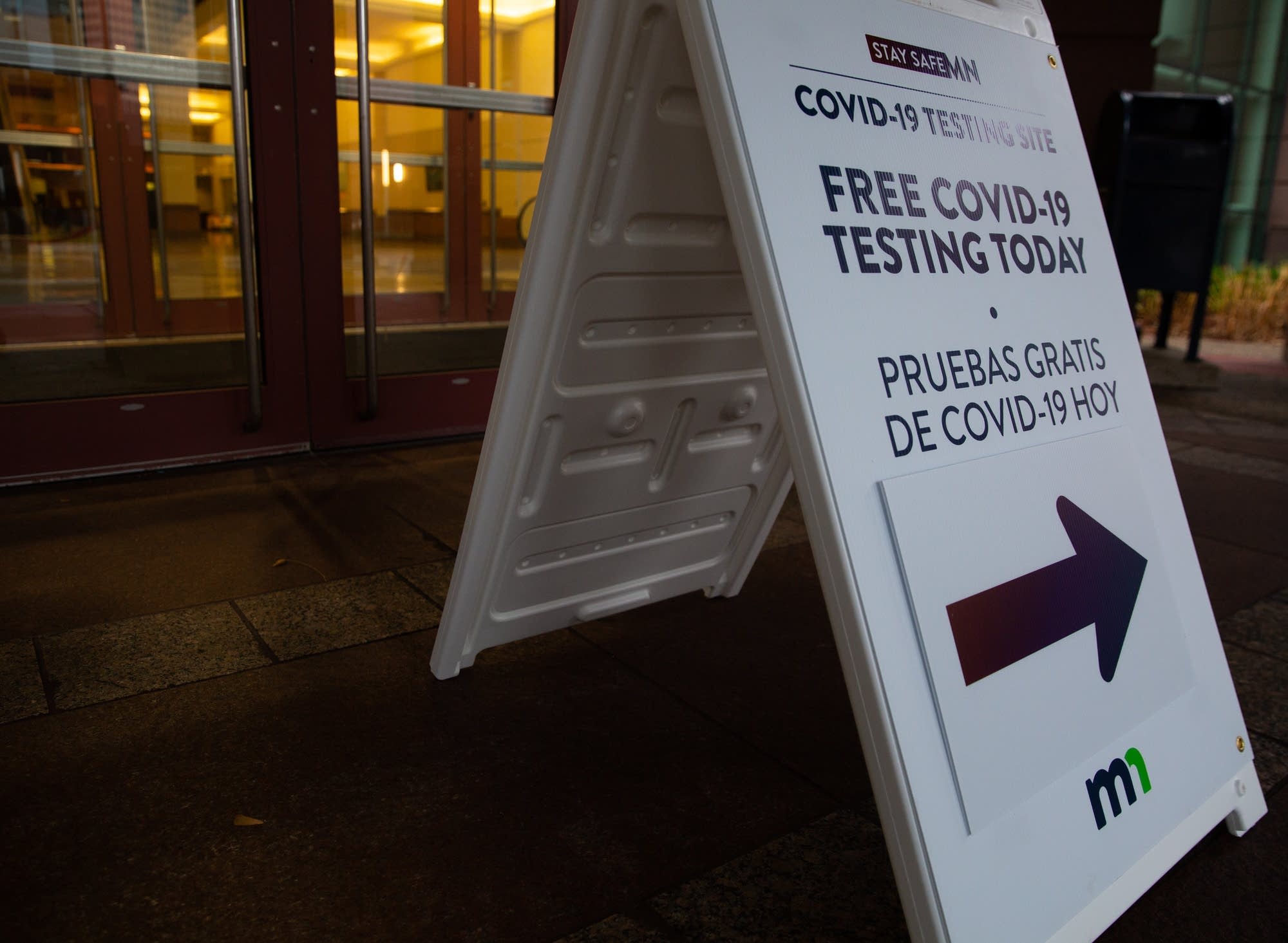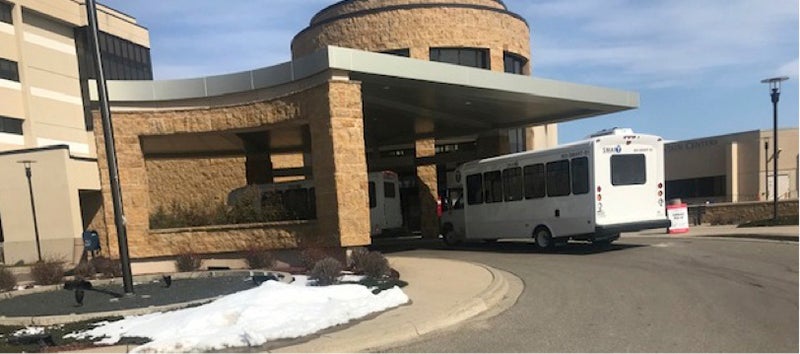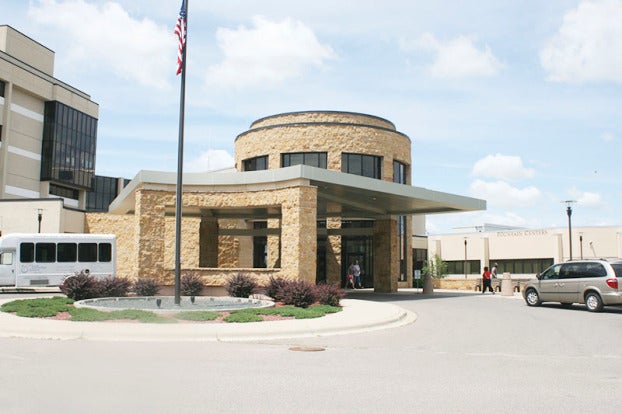Walz expects no-gather guidance for Christmas
Published 7:55 pm Monday, November 30, 2020

- A new COVID-19 testing site opened Nov. 9 at the Minneapolis Convention Center. Kathryn Styer Martinez/MPR News file
|
Getting your Trinity Audio player ready...
|
As public health authorities brace for a jump in COVID-19 cases, hospitalizations and deaths in coming weeks originating from Thanksgiving celebrations, Gov. Tim Walz says he’ll likely call on Minnesotans not to travel or gather for Christmas.
“I think the guidance around Thanksgiving is going to be very similar around Christmas,” he told reporters Monday, adding there was “little reason” to expect a change in the trajectory of the virus in the next four weeks.
Health leaders prior to Thanksgiving pleaded with people not to celebrate outside their immediate family households, warning that larger gatherings could lead to family members and friends without symptoms unknowingly spreading the virus to loved ones.
It’s not clear how closely those recommendations were followed.
“We are still in a very critical spot in this pandemic in Minnesota. This is the worst spot we’ve been in since March. That’s what the data tell us,” Minnesota Health Commissioner Jan Malcolm said Monday, comparing the state’s current conditions to prior surges in New York, Florida, Arizona and other past hot spots. “We are a hot spot.”
Minnesota’s total in the pandemic, now approaching 319,000 cases, could reach 400,000 “in the next couple of weeks or so,” she added.
Walz and Malcolm again implored people to wear masks in public gathering spaces, socially distance and take other measures to slow the spread of the virus.
Malcolm said she was grateful for families that heeded the state’s call to refrain from gathering outside their households.
For those who did gather, Malcolm urged they track any symptoms and consider getting a test five to seven days after the gathering to detect any spread “so that people can isolate and quarantine as appropriate.”
Mixed bag of data
Minnesota’s COVID-19 report on Monday offered a mixed bag of statistics that make the post-Thanksgiving landscape difficult to map. The number of newly confirmed or probable cases — 5,801 — was down from a week earlier, but so was testing.
The state Health Department reported 15 deaths, the lowest daily count reported in the past two weeks. Still, it raised the toll to 1,136 deaths reported during November — nearly one-third of all the deaths tied to COVID-19 in the pandemic.
New hospital admissions have trended down the past couple of days after peaking on Saturday, although hospitalizations are still high. More than 1,800 people are in Minnesota hospitals because of COVID-19 with nearly 400 needing intensive care. The numbers have leaped since Nov. 1.
The positive test rate — a key metric watched closely by officials — has been trending down in recent days, suggesting that the spread of the disease may be ebbing from its recent peak. Still the seven-day rate is at 10.5 percent, twice the 5 percent rate officials find concerning.
The newest numbers follow a long holiday weekend when Minnesota health officials reported more than 23,000 new COVID-19 cases and 203 deaths. Officials cautioned not to read deeply into any single day of data.
Of the 318,763 confirmed or probable cases identified to date, about 86 percent have recovered to the point they no longer need to be isolated.
The deaths reported Monday raised Minnesota’s toll to 3,593. Among those who’ve died, about 67 percent had been living in long-term care or assisted living facilities; most had underlying health problems.
Walz and Malcolm on Monday called on Minnesotans to stay vigilant against COVID-19, cautioning people not to read too much into bits of recent data suggesting some relief from the fall surge.
Caseloads spread across age groups
New cases have been climbing over the past month among all age groups.
People in their 20s still make up the age bracket with the state’s largest number of confirmed cases — more than 62,000 since the pandemic began, including more than 33,600 among people ages 20 to 24.
The number of high school-age children confirmed with the disease has also grown, with nearly 25,000 total cases among children ages 15 to 19 since the pandemic began.
The numbers help explain why experts remain particularly concerned about teens and young adults as spreaders of the virus.
Although less likely to feel the worst effects of the disease and end up hospitalized, experts worry youth and young adults will spread it to grandparents and other vulnerable populations.
It’s especially concerning because people can have the coronavirus and spread COVID-19 when they don’t have symptoms.
Walz said recently the state has data showing infection rates rising around bar and restaurant activity after 9 p.m. among young adults, noting that people who have the virus but don’t have symptoms may be unwittingly spreading it.
It’s one of the reasons he’s ordered a ban on in-person service at bars and restaurants until Dec. 18.
Virus surges across rural Minnesota
Regionally, central and northern Minnesota have driven much of the recent increase in new cases while Hennepin and Ramsey counties show some of the slowest case growth in the state.
The fastest growing outbreaks remain largely along the state’s western border with the Dakotas, where the virus is spreading unchecked. But new cases are rising everywhere in Minnesota.
Collectively, rural areas continue to report the most new COVID-19 cases per capita.
‘The honest, horrible truth’
State health systems are straining to staff hospital beds as COVID-19 cases grow and doctors, nurses and other care workers struggle to cope with illness among their own families and colleagues.
Malcolm on Monday afternoon highlighted the concerns that health care workers are being sidelined by COVID-19, either by illness or exposure in their communities.
The public needs to know the state’s health system is under serious stress, Dr. Cindy Firkins Smith, president of Carris Health in western Minnesota, told MPR News early Monday, prior to Malcolm’s remarks.
“We have to tell it like it is. We have to give people the honest, horrible truth of what we’re facing,” she said. “We have to tell them, ‘If you don’t do it — if you, the public, don’t do what you can do — we can’t save you because there are only so many people to take care of people out there.’”





